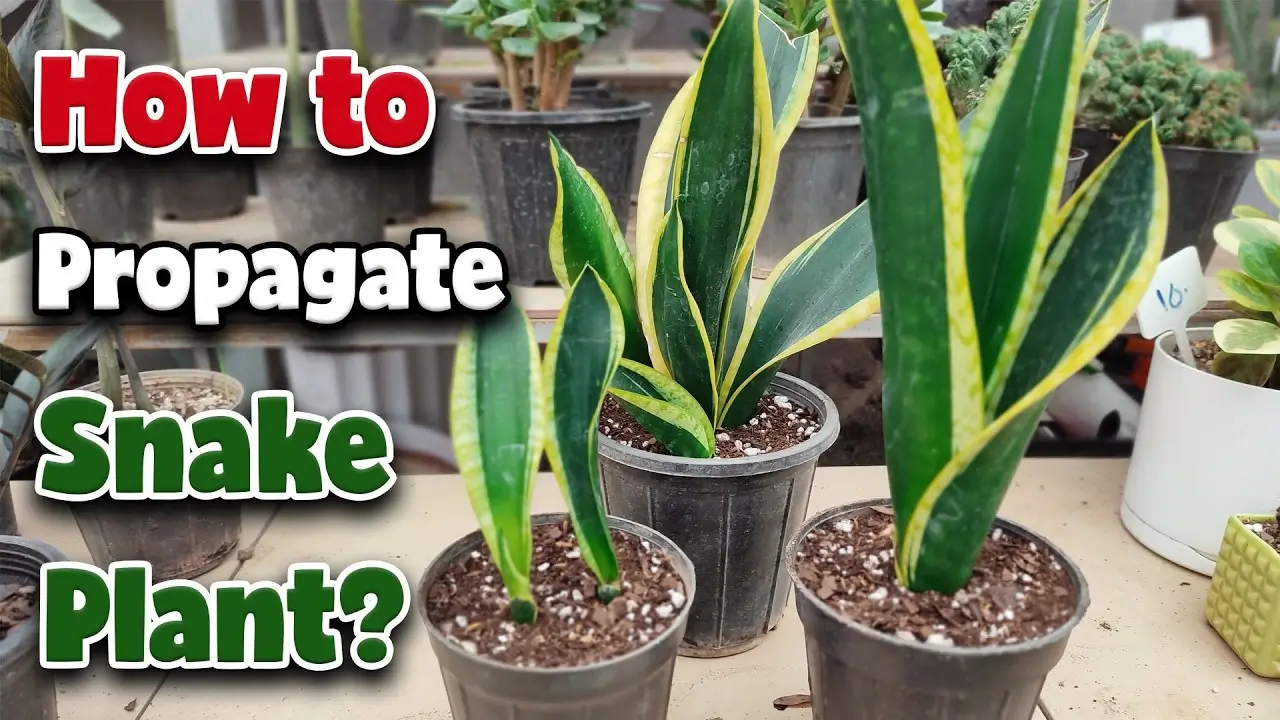Sansevieria, also known as the snake plant or mother-in-law’s tongue, is a resilient and attractive houseplant celebrated for its unique, sword-like leaves and air-purifying benefits. Over time, these plants can become root-bound or outgrow their pots, which is a perfect opportunity to propagate and refresh them. Propagation is also a sustainable and enjoyable way to share your love for houseplants with friends and family. Here’s a breakdown of three easy methods to propagate your Sansevieria successfully.
1. Division (The Easiest Method)
Division is the simplest way to propagate Sansevieria and provides instant results. This method works best for mature plants that have multiple clumps or are overcrowded in their pots.
How to Propagate by Division:
- Remove the Plant: Gently take the snake plant out of its pot and shake off the soil to expose the roots.
- Find Natural Separations: Look for natural separations in the plant where the leaves and roots form distinct clusters.
- Separate the Sections: Using a clean, sharp knife or pruning shears, divide the plant into sections, ensuring that each division has at least one healthy root and leaf cluster.
- Repot the Divisions: Place each division into a fresh pot with well-draining soil. Water lightly after repotting and ensure the new divisions receive bright, indirect light.
2. Leaf Cuttings (Great for Multiple Plants)
Leaf cuttings allow you to propagate several plants from one healthy leaf. This method takes more time but is perfect for maximizing your propagation efforts.
How to Propagate by Leaf Cuttings in Soil:
- Choose a Healthy Leaf: Select a mature, healthy leaf and cut it near the base using a clean knife or scissors.
- Cut the Leaf into Sections: Divide the leaf into 4–6-inch sections, ensuring you remember which end was closer to the roots (this will be the bottom).
- Dry the Cuttings: Allow the cuttings to dry for 1–2 days so that calluses form on the cut ends. This helps prevent rot when planted.
- Plant the Cuttings: After the cuttings have dried, plant them upright in well-draining soil, burying the bottom inch of each cutting. Keep the soil lightly moist but not soaked.
3. Rhizome Propagation (Perfect for New Growth)
Sansevieria grows from underground rhizomes, which are thick structures that produce new shoots or “pups.” Propagating from rhizomes is effective, especially for plants with visible pups or new growth.
How to Propagate from Rhizomes:
- Remove the Plant: Carefully remove the plant from its pot and clean the soil off the roots to expose the rhizomes.
- Locate Rhizomes with Pups: Look for rhizomes that have visible pups (small offshoots) attached.
- Cut the Rhizomes: Using a clean knife, cut the rhizomes into sections, making sure each piece has at least one shoot and some roots.
- Plant the Rhizome Sections: Place each rhizome section in fresh, well-draining soil, with the shoot or pup above the soil surface. Water lightly and keep the plant in a bright, indirect light location.
Caring for Newly Propagated Sansevieria
Once you’ve propagated your snake plant, it’s important to provide the right care to help the new plants thrive:
- Light: Place the new plants in bright, indirect light. Too much direct sunlight can scorch the leaves, while insufficient light will slow down growth.
- Watering: Allow the soil to dry out completely between waterings. Overwatering can lead to root rot, so it’s better to err on the side of dryness.
- Fertilizing: Feed your Sansevieria with a balanced houseplant fertilizer during the growing season (spring and summer) to encourage healthy growth. Avoid fertilizing during the dormant months (fall and winter).
Common Mistakes to Avoid
- Planting the Wrong End of Leaf Cuttings: When propagating with leaf cuttings, ensure that you plant the correct end—the bottom end (closer to the roots) must be placed in the soil.
- Skipping Drying Cuttings: Failing to let your cuttings dry and form calluses can cause them to rot once planted. Always let the cut ends dry for 1-2 days before planting.
- Low Light for New Cuttings: While Sansevieria can tolerate low light, new cuttings need bright, indirect light to promote root development. Avoid placing them in dark corners or spots with too much direct sunlight.
By following these methods and tips, you can successfully propagate your Sansevieria and enjoy even more of these stunning plants around your home. Whether through division, leaf cuttings, or rhizome propagation, you’ll have the satisfaction of growing and sharing your greenery in no time. Happy propagating!
